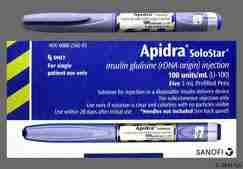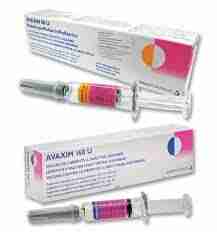



Lucentis
Generic Name : Ranibizumab
Brand Name : Lucentis
Strength : 10 mg
Price: 100000 TK
Stock: YES
User for : Human
Note : If medicine quantity 1 = 1 Strip ( plz see the description)
Share in Social Media
Product Details
Novartis Pharma AG
Each vial contains 3.0mg of ranibizumab in 0.3ml solution: injection.
Ind: Treatment of neovascular (wet) age-related macular degeneration (AMD).
Dosage & admin: The recommended dose is 0.5mg (0.05ml). Treatment initiated with a loading phase of one injection per month for 3 consecutive months followed by a maintenance phase in which patients should be monitored for visual acuity on a monthly basis. The interval between two doses should not be shorter than 1 month. Lucentis must be administered by a qualified ophthalmologist using aseptic techniques. Broad-spectrum topical microbicide and anaesthetic should be administered prior to the injection. The patient should be instructed to self-administer antimicrobial drops four times daily for 3 days before and after each injection. Not recommended in children and adolescents. C/I: Hypersensitivity to ranibizumab or to any of the excipients, patients with active or suspected ocular or periocular infections, patients with active intraocular inflammation.
Precautions & warnings: Intravitreous injec¬tions have been associated with endophthalmitis, intraocular inflammation, rhegmatogenous retinal detachment, retinal tear and iatrogenic traumatic cataract. Therefore, proper aseptic injection techniques must be used. Patients should be monitored during the week following the injection to permit early treatment if an infection occurs. Intraocular pressure and the perfusion of the optic nerve head must be monitored and managed appropriately. As with all therapeutic proteins, there is a potential for immunogenicity with Lucentis. Following treatment patients may develop transient visual disturbances that may interfere with their ability to drive or use machines. Patients should not drive or use machines as long as these symptoms persist. Pregnancy & lactation: Should not be used during pregnancy unless clearly necessary; use of effective contraception recommended for women of childbearing potential; breast-feeding not recommended.
Drug inter: No formal interaction studies have been performed.
A/R: Very common adverse reactions are- conju¬nctival haemorrhage, eye pain, vitreous floaters, retinal haemorrhage, intraocular pressure increased, vitreous detachment, intraocular inflammation, eye irritation, cataract, foreign body sensation in eyes, visual disturbance, blepharitis, subretinal fibrosis, ocular hyperemia, visual acuity blurred/decreased, dry eye, vitritis. Common adverse reactions are-ocular discomfort, conjunctival hyperaemia, posterior capsule opacification, retinal exudates, injection site reactions, lacrimation increased, eye pruritis, conjunctivitis, maculopathy, detachment of the retinal pigment epithelium; headache.
Uncommon adverse reactions are- retinal degen¬eration, iritis, iridocyclitis, punctate keratitis, keratopathy, dellen, corneal striae, retinal disorder, vitreous disorder, photophobia, cataract nuclear, anterior chamber flare, corneal abrasion, angle closure glaucoma, vitreous haemorrhage, uveitis, endophthalmitis, retinal detachment, retinal tear, eye haemorrhage, eyelid oedema, eyelid irritation, blindness, corneal oedema, hypopyon. Rare but serious adverse reactions related to intravitreal injections included endoph¬thalmitis, rhegmatogenous retinal detachment, retinal tear & iatrogenic traumatic cataract.
Note: Before prescribing, please read full prescribing information.
RELATED PRODUCTS







